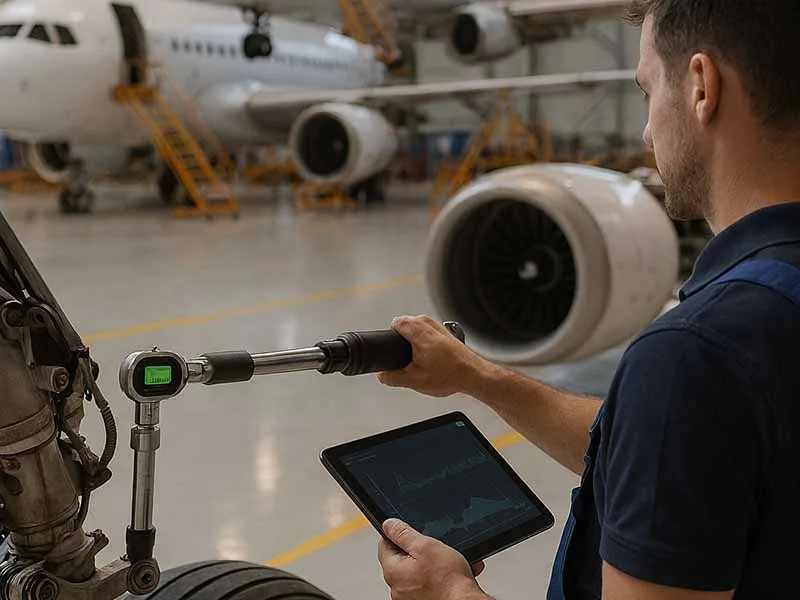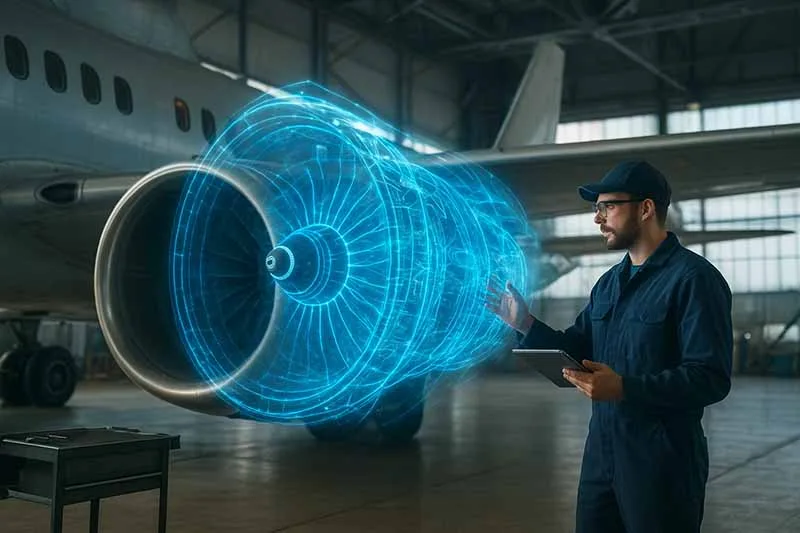Imagine if your torque wrench could complain when overused, or if a drilling machine politely reminded you that it needs recalibration. Welcome to the world of smart sensors and IoT in aerospace tooling—where every tool not only does its job but also communicates, records, and predicts performance.
In an industry where mistakes can cost millions—or even lives—connectivity and intelligence in tools are no longer luxuries; they’re becoming standard. But as with all revolutions, the transformation brings both benefits and challenges.
What Are Smart Sensors & IoT Tools?
Smart sensors embedded in aerospace tools collect real-time data such as pressure, torque, vibration, or temperature. When connected through IoT (Internet of Things) platforms, this data is transmitted to engineers, supervisors, and even AI systems for analysis.
Core Functions:
- Condition Monitoring: Detects tool wear and calibration needs.
- Process Tracking: Ensures assembly processes meet specifications.
- Quality Control: Flags errors instantly during production.
- Predictive Maintenance: Prevents unexpected downtime.
Applications in Aerospace Tooling
- Torque Tools: Smart torque wrenches log every tightening, ensuring bolts on fuselage panels meet safety requirements.
- Drilling & Riveting Tools: Sensors monitor vibration to reduce micro-cracks in composite structures.
- Calibration Alerts: Tools notify operators when accuracy drifts out of tolerance.
- Connected Workstations: IoT platforms synchronize hundreds of tools on assembly lines, providing real-time dashboards.
Case Example: Airbus has deployed smart torque systems in A350 production, significantly cutting rework by verifying every single fastening operation digitally.
Key Features of Smart Aerospace Tools
- Wireless connectivity (Wi-Fi, Bluetooth, or 5G)
- Integrated sensors for torque, angle, vibration, temperature
- Data logging and traceability for audits
- AI-driven error detection
- Cloud-based analytics dashboards
The Benefits of Smart Sensors & IoT in Aerospace
- Enhanced Safety: Immediate detection of faulty fastening prevents structural issues.
- Productivity Gains: Less downtime thanks to predictive maintenance.
- Traceability: Complete digital records of every step in assembly.
- Sustainability: Reduced waste and rework lower environmental impact.
- Worker Support: Real-time feedback helps technicians avoid costly mistakes.
The Challenges and Risks
Let’s face it—smart doesn’t mean perfect.
- High Investment: Equipping a production line with IoT tooling is expensive.
- Data Overload: Engineers may struggle to process the flood of information.
- Cybersecurity Risks: Connected tools could be vulnerable to hacking.
- Complex Integration: Older factories may face compatibility issues.
Critical Insight: Without proper training and cybersecurity policies, smart tools may create more headaches than solutions.
Technical Specifications Snapshot
While specifications vary, typical smart aerospace tools include:
- Accuracy: Torque tools ±1% or better.
- Connectivity: Wi-Fi/Bluetooth, sometimes industrial 5G.
- Battery Life: 6–12 hours for wireless units.
- Data Storage: Cloud logging with audit-ready traceability.
- Calibration: Auto-notification when tolerances drift.
Interesting & Lesser-Known Facts
- Interesting Fact: Some smart wrenches now include haptic feedback—vibrating when bolts hit the correct torque.
- Lesser-Known Fact: IoT platforms can integrate environmental sensors (humidity, temperature) because changes in hangar climate can affect composite curing or tool accuracy.
- Funny Fact: Aerospace engineers sometimes joke that tools will soon “file HR complaints” if they’re overused.
Future Outlook: Smart Factories, Smarter Tools
The vision is fully connected aerospace manufacturing:
- AI-powered IoT platforms analyzing tool data in real time.
- Augmented reality (AR) glasses guiding workers while tools confirm accuracy.
- Autonomous tool calibration stations ensuring zero human error.
Ultimately, aerospace tooling is moving toward Industry 4.0 standards, where data and tools merge seamlessly to guarantee unmatched precision.
Smart Sensors & IoT in Aerospace Tooling FAQ
Conclusion
Smart sensors and IoT are turning aerospace tools from passive instruments into active partners. They boost safety, efficiency, and traceability—but demand significant investment and training.
The message is clear: smart tools don’t replace skilled workers—they empower them. The future of aerospace tooling is not only about precision but about collaboration between humans and intelligent machines.
✈️ Have you ever worked with smart tools or IoT platforms in aerospace—or another industry? Share your experience in the comments and spread this article on social media.





